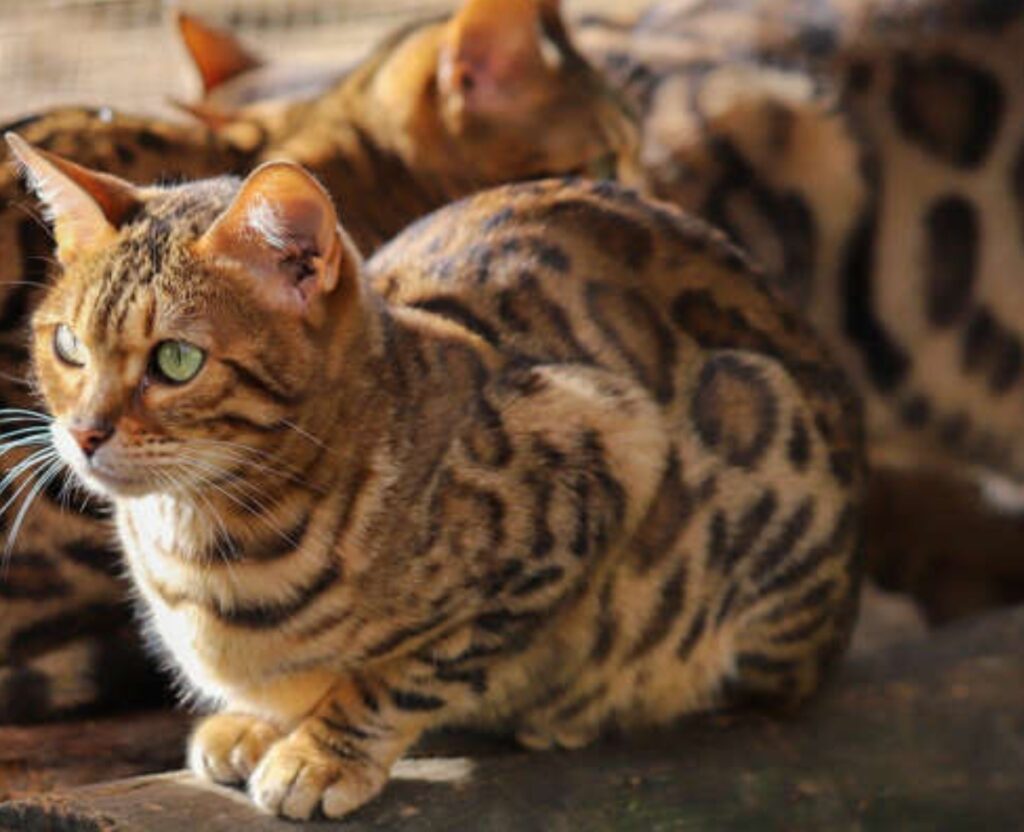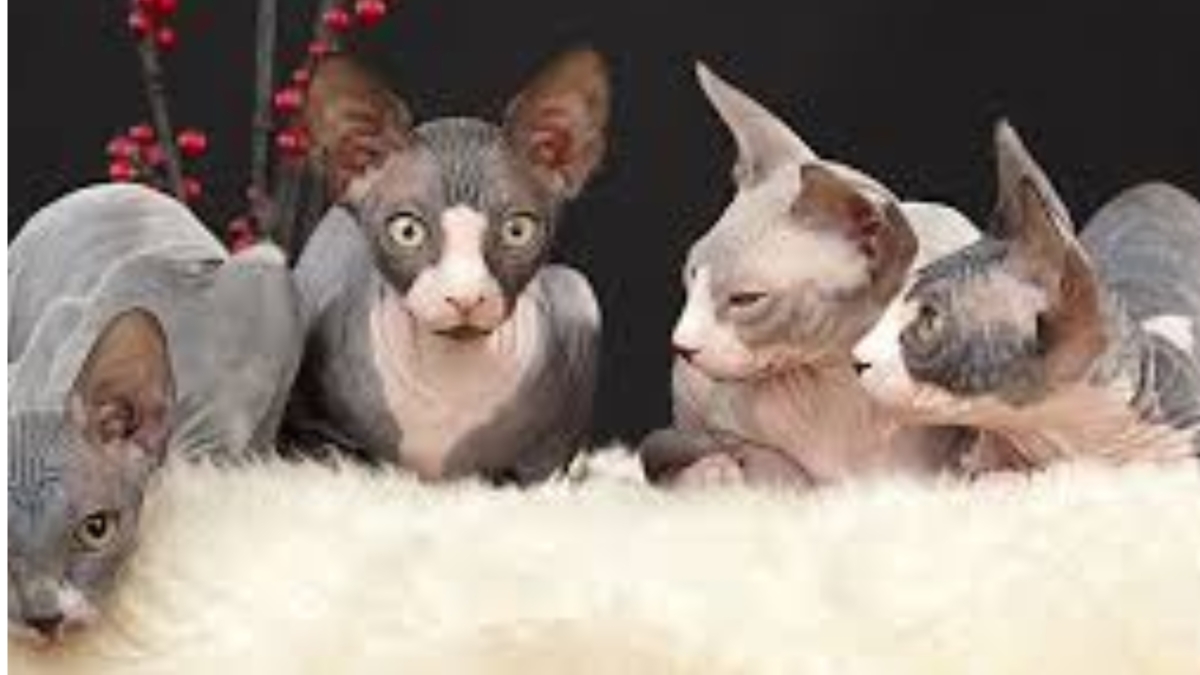When one thinks of “exotic cat pets,” images of tigers or snow leopards might come to mind. However, exotic cat pets are legally kept as domesticated pets in the United States.
Some of the cats may be exotic cats and the fact that they are wild cats that are kept as pets means that they do not hunt humans. These cats are good pets if the owner is patient enough to handle them but before buying one should do so carefully. Here’s what you should know before getting an exotic pet for your home.
Cats are social animals and keep their instincts. They have long benefited from being with humans. If you want to learn about exotic pet care, read the full article. It will answer your questions and help you understand exotic cat pets better.
Some small Exotic Cat pets Breeds
Chausie:
When breeding Abyssinians with wild jungle cats, the Chausie was developed which is quite an exceptional feline breed. This is because of their muscle mass, especially their eyes which appear to give them an exotic look. Of course, due to the hunting distinctiveness that has been observed in Chausies, they may not be good companions to the other smaller animals. These pets become affectionate with their owners and do not like situations where they are left all alone.
Bengal:
The Bengal cats are beautiful hybrids of domestic cats like the Egyptian Mau and the Asian Leopard Cat. They are stout in build and they have nice spots like the leopard’s skin. Being extremely lively and charming in demeanor, Bengals are also rather smart and they are not idle. They need enough space to run, play, and climb to stay happy and avoid being destructive.
Savannah Cat:
Savannah cats are large house cats becoming more popular. This breed comes in different types, each with its look and traits. They were created by breeding a Serval with regular domestic cats. These cats like water, so they might join you in the shower or play in the dishwater. They are very loyal and attentive, quickly noticing everything around them. With proper training, they can walk comfortably on a leash.
Ocicat:
The Ocicat looks exotic, but it has no wild cat ancestors; only domesticated cats appear in its family tree. Despite this, their unique look and personalities charm many people. Ocicats are very social and get along well with new pets and visitors. They quickly learn new ideas and can even pick up tricks. Their intelligence and eagerness to learn give them a dog-like quality, making them ideal for those who want an interactive pet.
Toyger:
The Toyger is a special cat breed that looks like a tiny tiger, which is why it’s named so. It has no wild ancestors; it’s a mix of Bengal cats and regular tabbies. Breeders have carefully developed its eye-catching appearance. Toygers are friendly and usually get along well with other animals. They can also be trained to walk on a leash, so you can take them on adventures.
Pixie-Bob:
Pixie-bob cats are different from other breeds because they look like wild lynxes or bobcats. The exact lineage of the breed is unknown, however, most breeders assume that it is the result of the matting of a barn cat and a bobcat. Therefore, each Pixie-Bob pet has a different bobtail coat that enhances the cat’s appeal. By nature, the dogs are generally calm, and less reactive instead of being dominant or rambunctious.
Abyssinian:
The Abyssinian is a wonderful breed of cat that has a coat of a very special kind. It came from Ethiopia and it is a very old breed for cats. Up to now, it is still people’s favorite. Abyssinians are very active but document that they are also very gentle; they like people. They like climbing so ensure you provide them with high towers to climb in the house.
Egyptian Mau:
The Egyptian Mau is an active cat with a wild look and striking green eyes. It is the only breed with natural spots. Socialize them early to help them adjust. They are gentle and may feel nervous around new people. They bond closely with their owners and do best in a quiet home without children.
Fishing Cat:
Fishing cats live in Southeast Asia and are wild. They aren’t pets and require special permits for experienced owners. They are strong and have natural survival skills. Some people try to keep them as pets, but you need special skills and equipment. They differ greatly from house cats and may not be legal to own in all states.
Geoffroy’s Cat:
Geoffrey’s cat is a wild animal from South America. They haven’t been domesticated but are sometimes kept as pets. Because they are endangered, keeping them in captivity helps their population. They are active at night and hunt while you sleep. They don’t behave like regular house cats and might require a permit or license in some areas.

Behavioral and Health Issues in Hybrid Cats
Hybrid cats can be aggressive. Unlike lions, most wild cats prefer to be alone. They might struggle to get along with people and can act unpredictably. They could attack people or other pets in the home. If they go outside, they might also attack neighborhood animals like cats and dogs. Hybrid cats come from breeding two different species that don’t normally mate.
Conclusion
Getting an exotic cat can be exciting with many new things to learn. But you need to think carefully about the responsibilities and challenges. Exotic cats are different from regular house cats. They have special needs that may need extra effort. For example, they need special food and cannot eat regular cat food. They might also need certain living conditions, like specific spaces or items.
Exotic cats can also have unique health needs. You might need a vet who understands their specific issues, leading to more vet visits or special treatments. They might also need more attention and care than you expect. Learn about their habits and health needs before bringing one home. Understanding what they need and if you can meet those needs helps you decide if an exotic cat is right for you. Preparing well will help ensure a happy and healthy life together.

